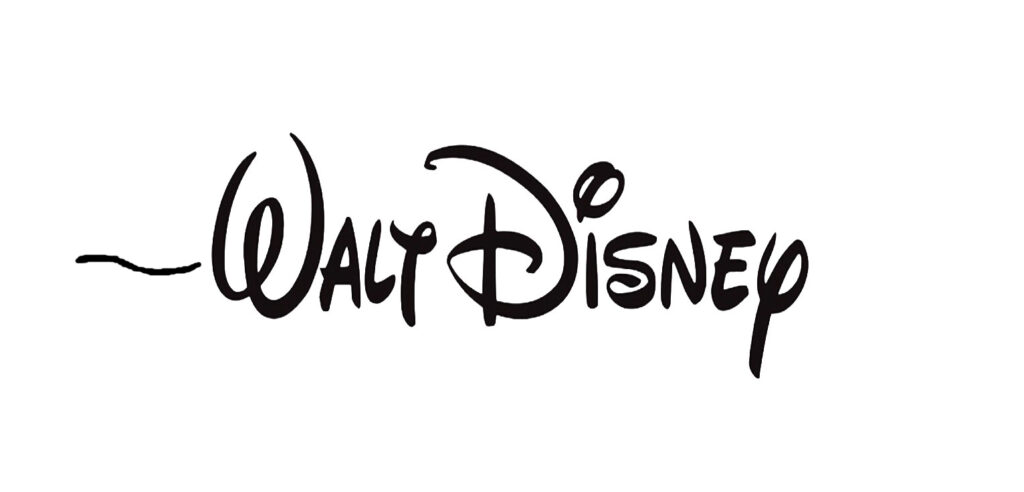STANDARD PRINCESS FILM OPENING

The film’s opening titles in stark white and teal are cross-faded against a single background of patterned gold. A full orchestra and chorus accompany these with a bombastic version of Frank Churchill’s (1901-1942) melody for the film’s first song, “One Song”, its opening motif repeated at least three times as a fanfare before expounding the tune’s subsequent line and before the credits start detailing a who’s who of the film’s creative teams – directors, supervisors, animators, background artists, musicians and the like. On the fourth screen – with Walt’s signature appended to it– is his personal note of gratitude:
“My sincere appreciation to the members of my staff whose loyalty and creative endeavor made possible this production.”
As the music modulates into an upbeat orchestral waltz rendition of “Someday My Prince Will Come”, the credits dissolve through a blackout into the image of a large gilded book with the film’s title across its cover and along its lower border an embossed image of all seven dwarfs. Momentarily and of its own accord, this tome and a couple of its first blank pages swing open to reveal formal text – illuminated with cute depictions of animals – expostulating the narrative groundwork of the story: little princess Snow White’s stepmother an evil queen, jealous of her ward’s beauty, has dressed her in rages and forced her to labor as a “scullery maid”. In the lower right corner of the page is the image of a scrub brush with a royal crown askew on top of it. The page turns over and the next – this one illuminated with images that suggest vanity (a peacock) and mayhem (a dagger) – informs us that this Queen daily consults her Magic Mirror to confirm that she remains “fairest one of all” and that so long as she receives that affirmation Snow White is safe.
This use of a book and its written pages to introduce the film became the “signature” beginning of Disney’s three “princess” features – the other two being Cinderella and Sleeping Beauty.
When the book at the beginning of the film opens, it has a bit of a “silent movie” approach, with text that audiences have to read that gets them instantly involved interactively with the story.[1]
Here this succinct verbiage dispenses with the Grimm Brothers’ elaborate backstory about how the princess came to be named “Snow White” by her mother and other irrelevant detail. We are provided only as much as we need to know for the story to begin unfolding, which it does immediately afterward in a brilliant compelling sequence…
[1] From Korkis, Jim: “Snow White Storytelling”, August 15, 2012, at www.mouseplanet.com/10014/Snow_White_Storytelling

This is Bill commenting on Jackie’s phone!